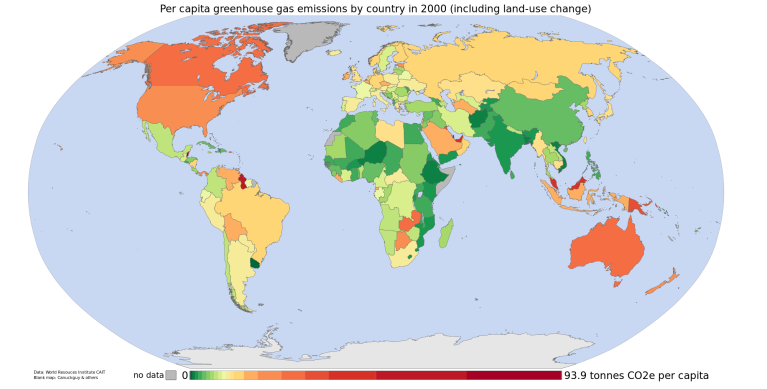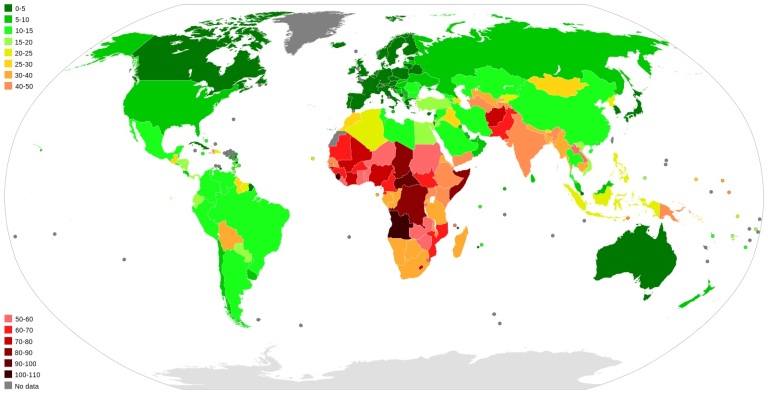Every high school teacher knows it. When the flurry of tests, papers, college apps, and team sports slows in May, the high school seniors think about it.
In the US, the Class of 2016 is inheriting some back-breaking issues. Climate Change, Zika, ISIS, income inequality, a million-plus migrants in Europe, a national debt approaching $20 trillion. It’s a scary world out there. Just ask a soon-to-be-graduating senior!

We their teachers have not adequately prepared them to engage with these daunting issues, in large part because of disciplinary “silos” that will be only more rigid at the college level. Also, of course, because of our content-based standards which practically beg us not to engage with the roiling world of the present moment.
At the same time, as I noted last week, a majority (52%) of those asked in a global poll of some 20,000 people identified global citizenship as more important on the individual level than national citizenship. Political identity is shifting.
Should we rely on the media to inform our students about the people working on solutions to the world’s great challenges? A quick look at the homepage at cnn.com: Leicester City fans cry with joy while “32,000 Sign Up for Nude Restaurant.” I can see the “Met Gala Best Looks,” and consider “How Much Would You Pay for an Upgrade?” Enough said.
Secondary schools need a new Civics, a way of thinking about our place in the world within the context of public education. A basic, required Global Civics course, combined with an increased focus on multiliteracy, would be a downpayment on a globally literate American population. Here is how I might see it in an American school:
Fall 2016: US Civics. Learn the rights and responsibilities of a citizen by enacting them through some form of activism (register peers to vote, for example). Learn the structure of local, state, and federal government–then petition the government about an issue. Special attention paid to the presidential and down-ballot elections in November.
Spring 2017: World Civics. Learn the rights and responsibilities of a global citizen. Learn the structure of the UN and other global organizations. Learn about the global challenges of our time, the debates about how to meet them, and the methods of the groups are being effective in making a difference.
This course would necessarily be interdisciplinary by design and based on a model akin to solutions journalism. Students would see their teachers cooperating designing units. Importantly, students would be asked to assess the solutions they encounter, arguing for the ways forward they see as preferable. One assessment would be completed in a language other than the student’s “mother tongue”/first language.
For fun, here are my Course Units:
1. The birth of global citizenship–the League of Nations and the UN–and current definitions;
2. The Bretton Woods Trio, Free Trade, and the debates about global trade and finance;
3. Global Poverty and Ways of Easing It;
4. Global Health with special emphasis on the fight against Zika this year;
5. Energy, Climate Change, and a sustainable future, with emphasis on the Paris Treaty;
and then, 6, a capstone assignment in which each student discusses how their own outlook on global citizenship is leading them in responsible action on some aspect of an issue covered during the semester.

This has been tried before. A couple years ago, Hakan Altinay, then a “non-resident scholar” at the Brookings Institution, secured an impressive group of lecturers on a series of topics, from climate change to nuclear proliferation, and created a website called globalcivics.net. A look at the site suggests it’s petered out–I want a course encouraging active citizenship rather than something lecture-based anyway–but the need for such an education remains.

In World Civics, we can ask science teachers to explain the bleaching of coral reefs. But they will also need time to answer the question, “What is going to be done?” We can ask economics teachers to explain what the World Bank is or why the US really cannot tell Apple to make its phones in stateside, despite what Donald Trump says. And social science teachers can offer background on the changing strategies for managing the world’s problems, especially human migration.
Taken together, such a course would fight pessimism and defeatism and begin to equip each student for pursuing a life as an informed global citizen.